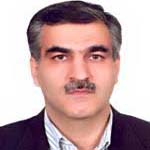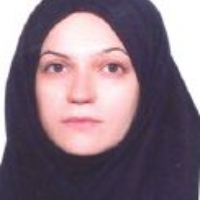Precipitation changes due to cloud seeding operations by WRF meso-scale model
Author(s):
Article Type:
Research/Original Article (دارای رتبه معتبر)
Abstract:
Numerous numerical experiments have been performed to cloud model seeding over the last two decades. Silver iodide nucleation has been parameterized using different methods in these studies. The results of these studies indicate that cloud seeding can change the distribution of precipitation in most cases. Moreover, most of these numerical simulations have been used only in the field of convective cloud seeding and are incapable of complete simulation of atmospheric conditions. For this purpose, the governing equations should be parameterized in three dimensions for the general case and be used in the appropriate model.In this study, the effect of cloud seeding, whether increasing or decreasing in rainfall, has been studied. For this purpose, the WRF numerical model has been developed to simulate the cloud seeding. Since, it is virtually impossible to repeat experiments under similar meteorological conditions, a model that can simulate the effect of cloud seeding on microphysical processes and precipitation could avoid many speculations or inaccurate estimates.The basic hypothesis of cloud seeding is based on the physical principle that at sub-freezing temperatures the equilibrium vapor pressure relative to ice is lower than the equilibrium vapor pressure relative to liquid water. Therefore, the saturated environment with 100% relative humidity relative to water (RHW = 100%) will be supersaturated relative to ice at temperatures below zero degrees Celsius (Pruppacher and Klett, 2010). As a result, in a cloud that is saturated with liquid water and composed of supercooled cloud water droplets, ice particles grow rapidly to form larger and heavier drops which could be fall as rain drops. In that environment, tiny, supercooled cloud droplets either grow in upward motion or evaporate to provide vapour for ice to grow. Therefore, in the cloud seeding with silver iodide, ice particles are expected to be produced and grow in the cold part of the cloud, and the liquid water of the cloud will be transformed into ice phase species more quickly.The operational cloud seeding project has been carried out in the northwest area of Iran. At the time of operational project, the seeding target area was under the influence of the eastern Mediterranean low pressure center, this trough has caused the formation of divergence in its downstream in the upper levels of the atmosphere in the target area and has led to the formation of severe upward movements. Stable and thick clouds have formed in the area. Under the above mentioned environmental conditions, 44 pyropatrons of 4% silver iodide were fired at the target area by a seeding aircraft. Silver iodide particles measuring 0.1 to 1 mm are very effective in freezing nuclei. In this study, the effect of seeding is coded based on the model of Meyers et. al (1995) and Seto et. al (2011) by applying the seeding conditions into the Morrison scheme code within the WRF model and changing the number density and mixing ratio of cloud ice due to the silver iodide injected into the atmosphere.By simulating the effect of cloud seeding, meteorological quantities, including precipitation under seeding conditions, are estimated by changing the Morrison microphysical scheme in the WRF model. The WRF numerical model was also run in control mode (without applying cloud seeding relations). By comparing the output rainfall of the numerical model in seeding mode with the output rainfall of the numerical model in control mode, the amount of cloud seeding effect was determined.The results showed that the changes resulting from seeding in the studied cloud seeding operation were not favorable in all stations, and in some cases, the decrease in precipitation was seen 2 hours after seeding. This decrease in some stations, such as Maragheh, Tabriz, Sahand, and Khoy, starts from seeding time and continues until the end. But in a station like Sarab, although the rainfall decreases slightly at the beginning of cloud seeding, over time, it increases to 7% after two hours. While seeding in Parsabad, and Ahar stations resulted in precipitation enhancement by 3%, 9%, and 27% two hours after seeding, respectively.
Keywords:
Language:
Persian
Published:
Journal of the Earth and Space Physics, Volume:49 Issue: 1, 2023
Pages:
171 to 187
magiran.com/p2591372
دانلود و مطالعه متن این مقاله با یکی از روشهای زیر امکان پذیر است:
اشتراک شخصی
با عضویت و پرداخت آنلاین حق اشتراک یکساله به مبلغ 1,390,000ريال میتوانید 70 عنوان مطلب دانلود کنید!
اشتراک سازمانی
به کتابخانه دانشگاه یا محل کار خود پیشنهاد کنید تا اشتراک سازمانی این پایگاه را برای دسترسی نامحدود همه کاربران به متن مطالب تهیه نمایند!
توجه!
- حق عضویت دریافتی صرف حمایت از نشریات عضو و نگهداری، تکمیل و توسعه مگیران میشود.
- پرداخت حق اشتراک و دانلود مقالات اجازه بازنشر آن در سایر رسانههای چاپی و دیجیتال را به کاربر نمیدهد.
In order to view content subscription is required
Personal subscription
Subscribe magiran.com for 70 € euros via PayPal and download 70 articles during a year.
Organization subscription
Please contact us to subscribe your university or library for unlimited access!




